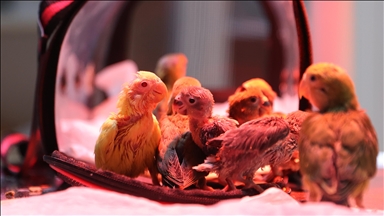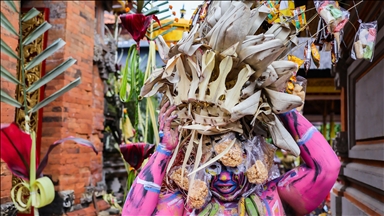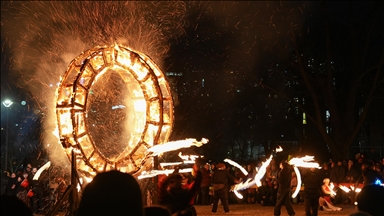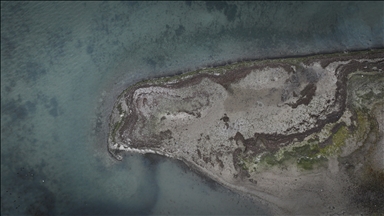
IZMIR, TURKIYE - OCTOBER 14: Green parrots use the hollows of palm trees in Izmir's Kulturpark as nesting sites in Izmir, Turkiye on October 14, 2024. These parrots, also known as "ring-necked parakeets" (Psittacula Krameri), are native to Africa and South Asia but have adapted to the climates of many countries, including Turkiye. Noted for their mimicry, long tail feathers, and red beak, they have increased their population and become a resident species in the area. ( Berkan Çetin - Anadolu Agency )
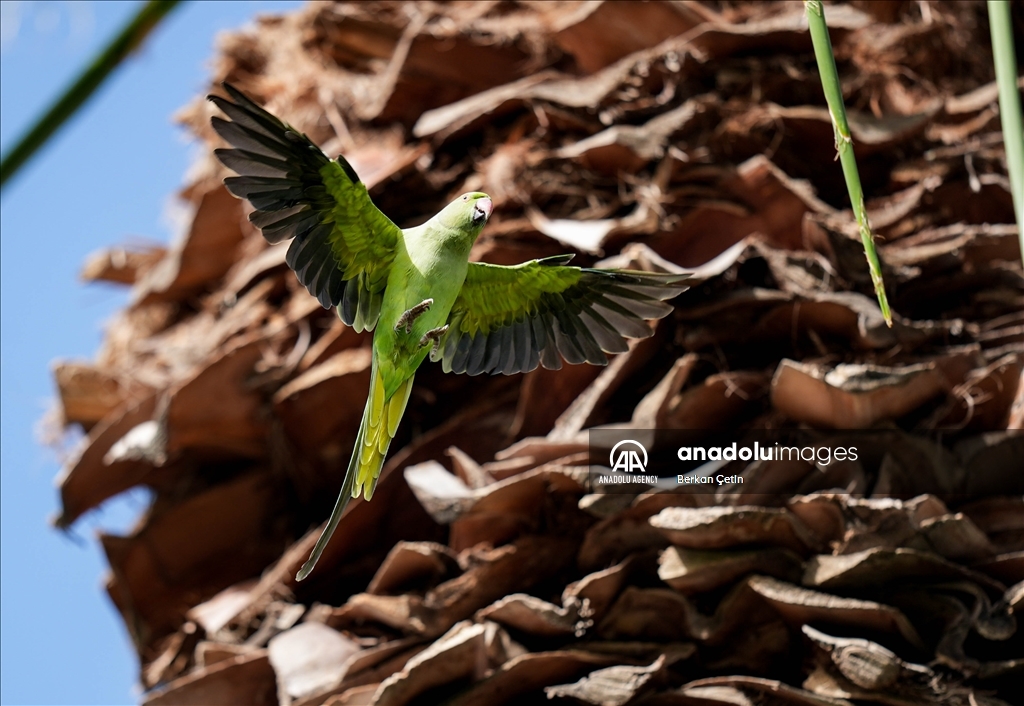
IZMIR, TURKIYE - OCTOBER 14: Green parrots use the hollows of palm trees in Izmir's Kulturpark as nesting sites in Izmir, Turkiye on October 14, 2024. These parrots, also known as "ring-necked parakeets" (Psittacula Krameri), are native to Africa and South Asia but have adapted to the climates of many countries, including Turkiye. Noted for their mimicry, long tail feathers, and red beak, they have increased their population and become a resident species in the area. ( Berkan Çetin - Anadolu Agency )
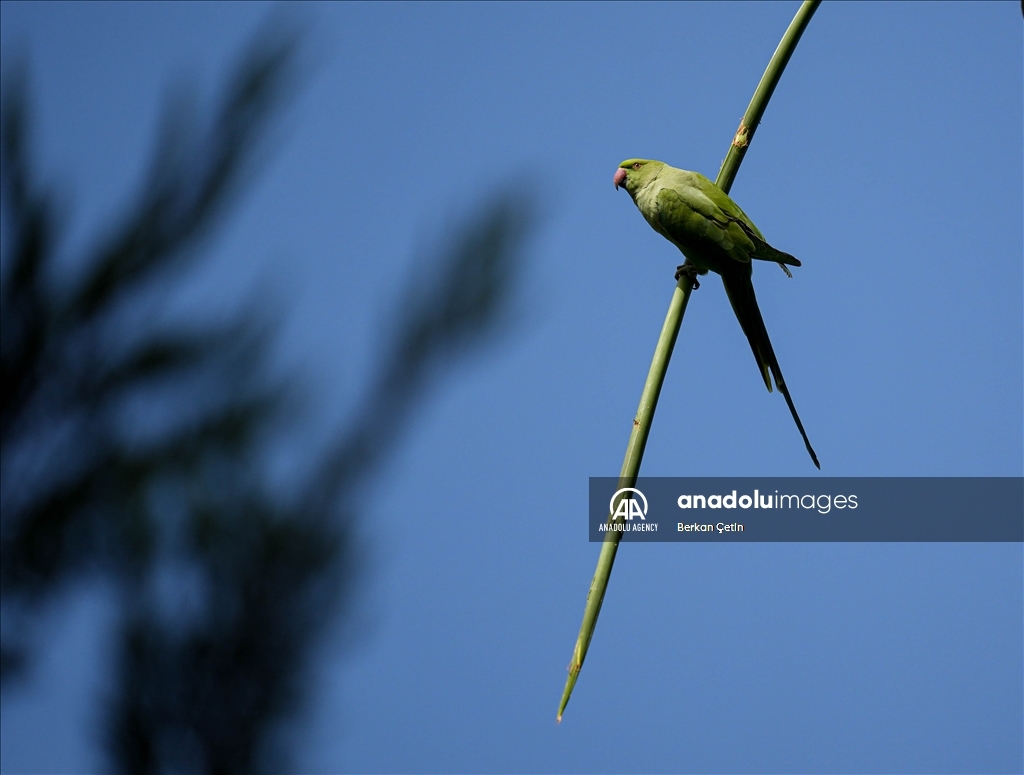
IZMIR, TURKIYE - OCTOBER 14: Green parrots use the hollows of palm trees in Izmir's Kulturpark as nesting sites in Izmir, Turkiye on October 14, 2024. These parrots, also known as "ring-necked parakeets" (Psittacula Krameri), are native to Africa and South Asia but have adapted to the climates of many countries, including Turkiye. Noted for their mimicry, long tail feathers, and red beak, they have increased their population and become a resident species in the area. ( Berkan Çetin - Anadolu Agency )
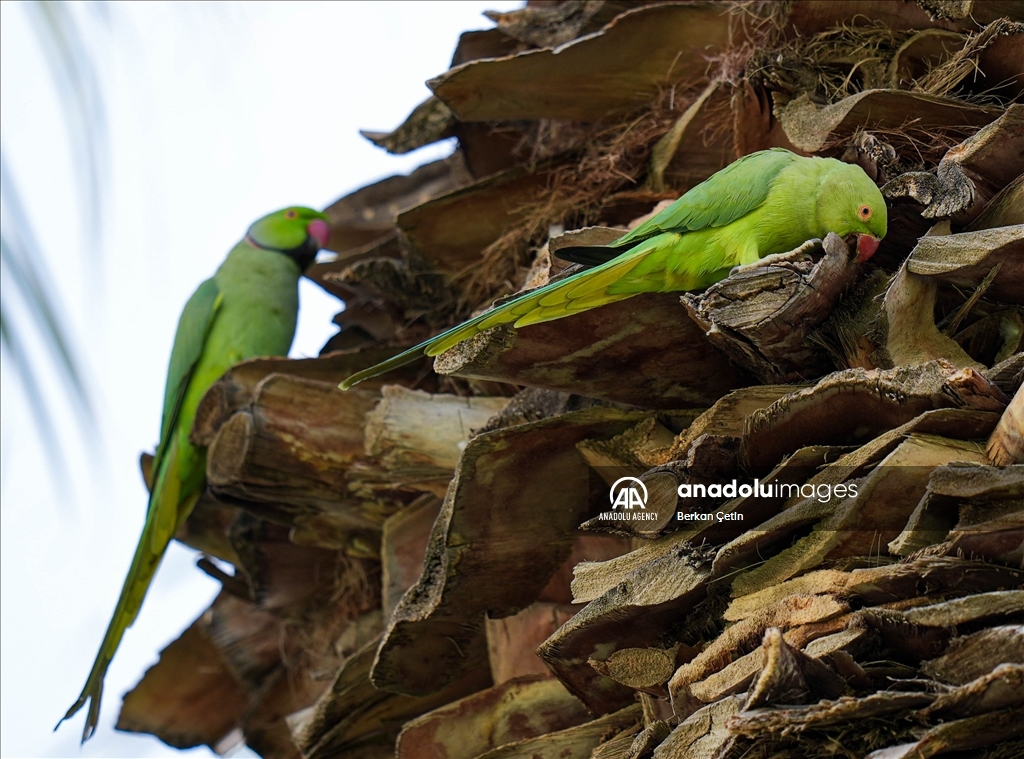
IZMIR, TURKIYE - OCTOBER 14: Green parrots use the hollows of palm trees in Izmir's Kulturpark as nesting sites in Izmir, Turkiye on October 14, 2024. These parrots, also known as "ring-necked parakeets" (Psittacula Krameri), are native to Africa and South Asia but have adapted to the climates of many countries, including Turkiye. Noted for their mimicry, long tail feathers, and red beak, they have increased their population and become a resident species in the area. ( Berkan Çetin - Anadolu Agency )
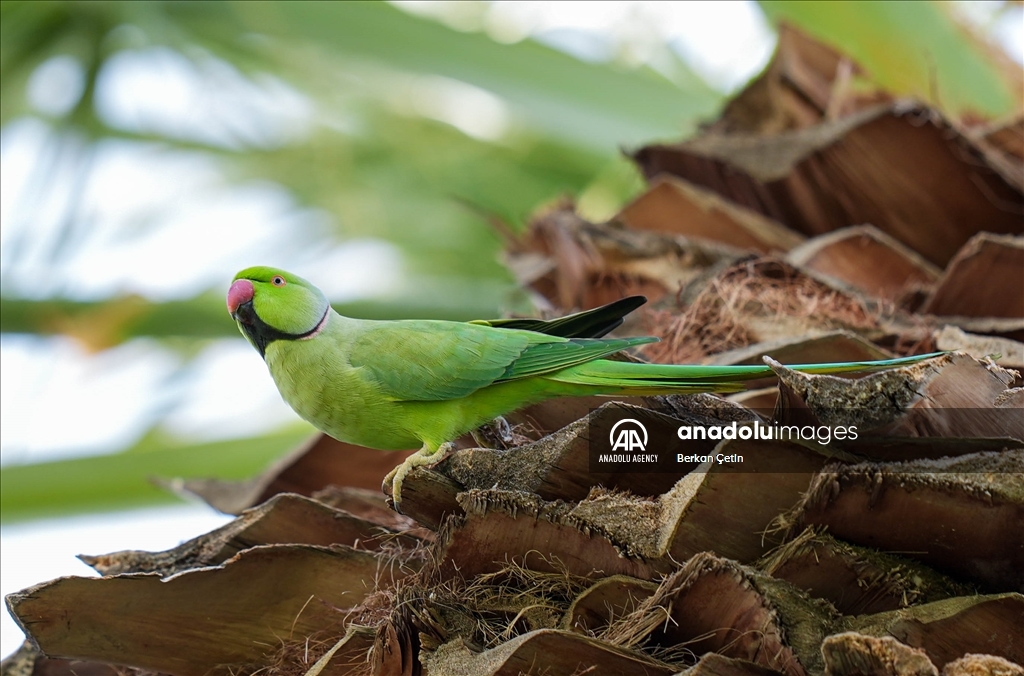
IZMIR, TURKIYE - OCTOBER 14: Green parrots use the hollows of palm trees in Izmir's Kulturpark as nesting sites in Izmir, Turkiye on October 14, 2024. These parrots, also known as "ring-necked parakeets" (Psittacula Krameri), are native to Africa and South Asia but have adapted to the climates of many countries, including Turkiye. Noted for their mimicry, long tail feathers, and red beak, they have increased their population and become a resident species in the area. ( Berkan Çetin - Anadolu Agency )
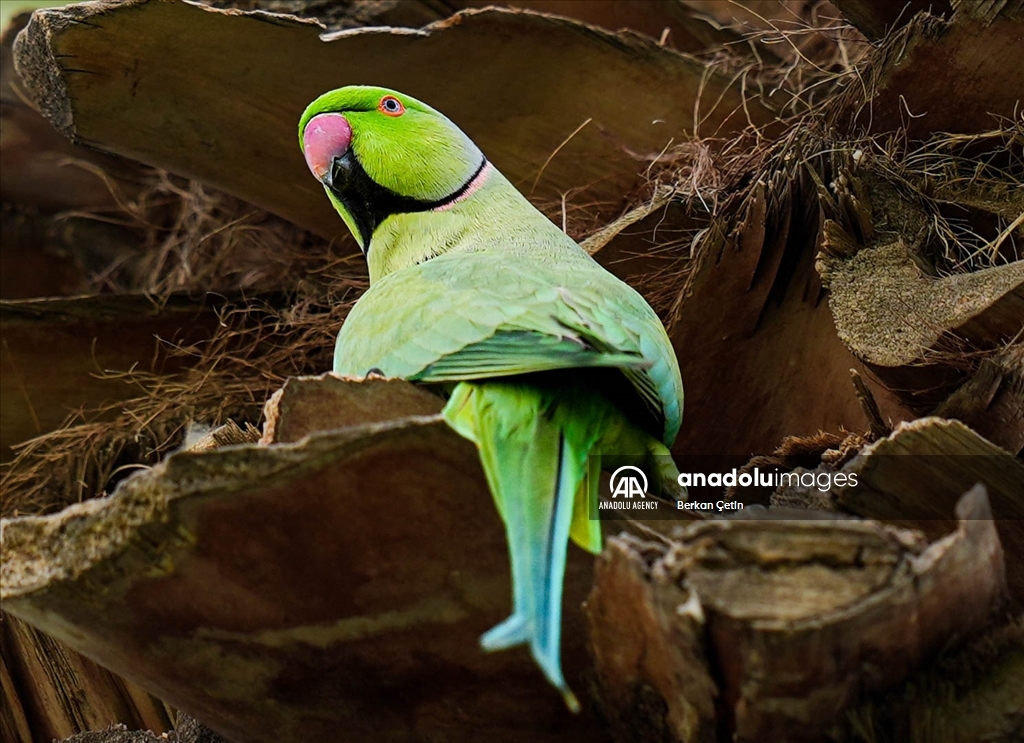
IZMIR, TURKIYE - OCTOBER 14: Green parrots use the hollows of palm trees in Izmir's Kulturpark as nesting sites in Izmir, Turkiye on October 14, 2024. These parrots, also known as "ring-necked parakeets" (Psittacula Krameri), are native to Africa and South Asia but have adapted to the climates of many countries, including Turkiye. Noted for their mimicry, long tail feathers, and red beak, they have increased their population and become a resident species in the area. ( Berkan Çetin - Anadolu Agency )
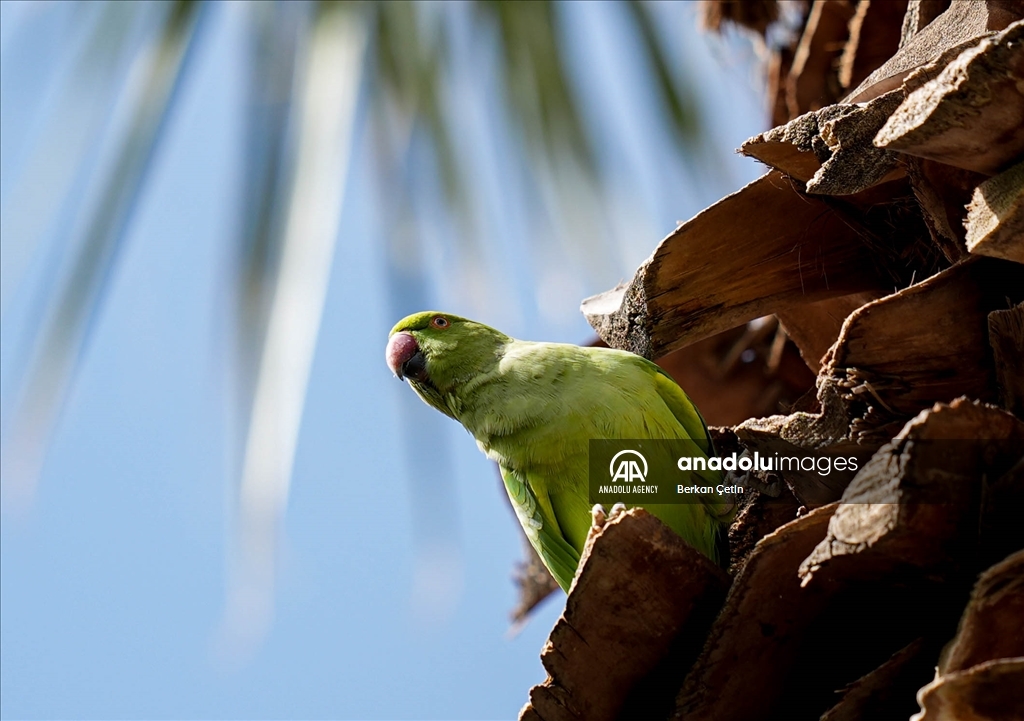
IZMIR, TURKIYE - OCTOBER 14: Green parrots use the hollows of palm trees in Izmir's Kulturpark as nesting sites in Izmir, Turkiye on October 14, 2024. These parrots, also known as "ring-necked parakeets" (Psittacula Krameri), are native to Africa and South Asia but have adapted to the climates of many countries, including Turkiye. Noted for their mimicry, long tail feathers, and red beak, they have increased their population and become a resident species in the area. ( Berkan Çetin - Anadolu Agency )
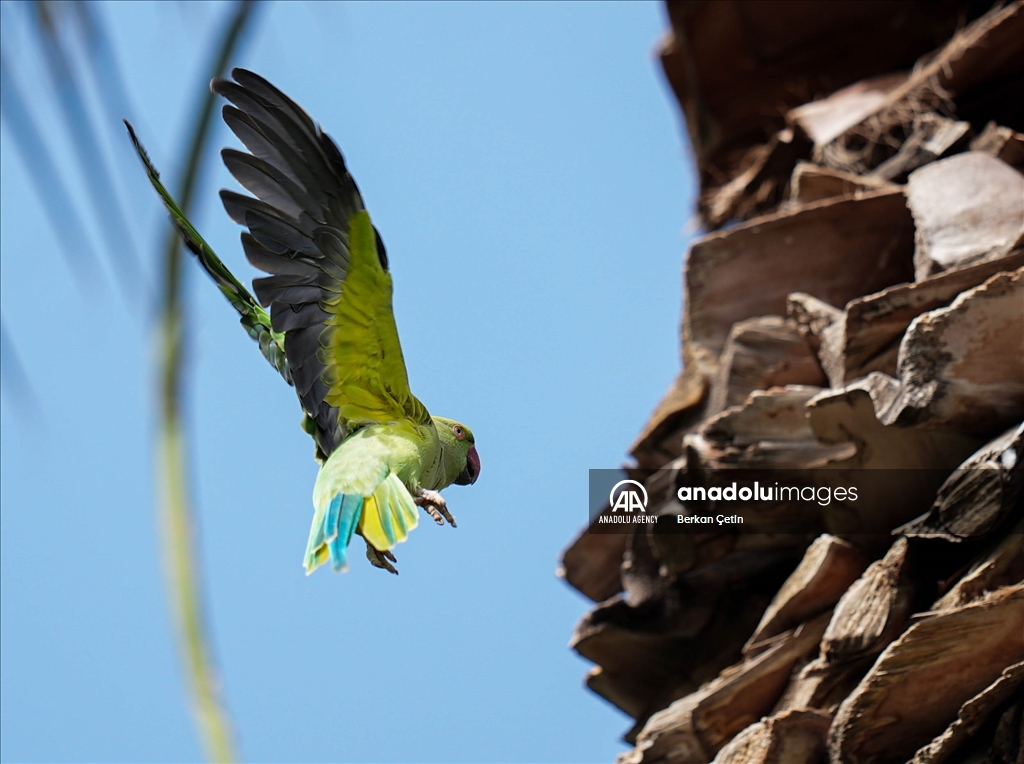
IZMIR, TURKIYE - OCTOBER 14: Green parrots use the hollows of palm trees in Izmir's Kulturpark as nesting sites in Izmir, Turkiye on October 14, 2024. These parrots, also known as "ring-necked parakeets" (Psittacula Krameri), are native to Africa and South Asia but have adapted to the climates of many countries, including Turkiye. Noted for their mimicry, long tail feathers, and red beak, they have increased their population and become a resident species in the area. ( Berkan Çetin - Anadolu Agency )
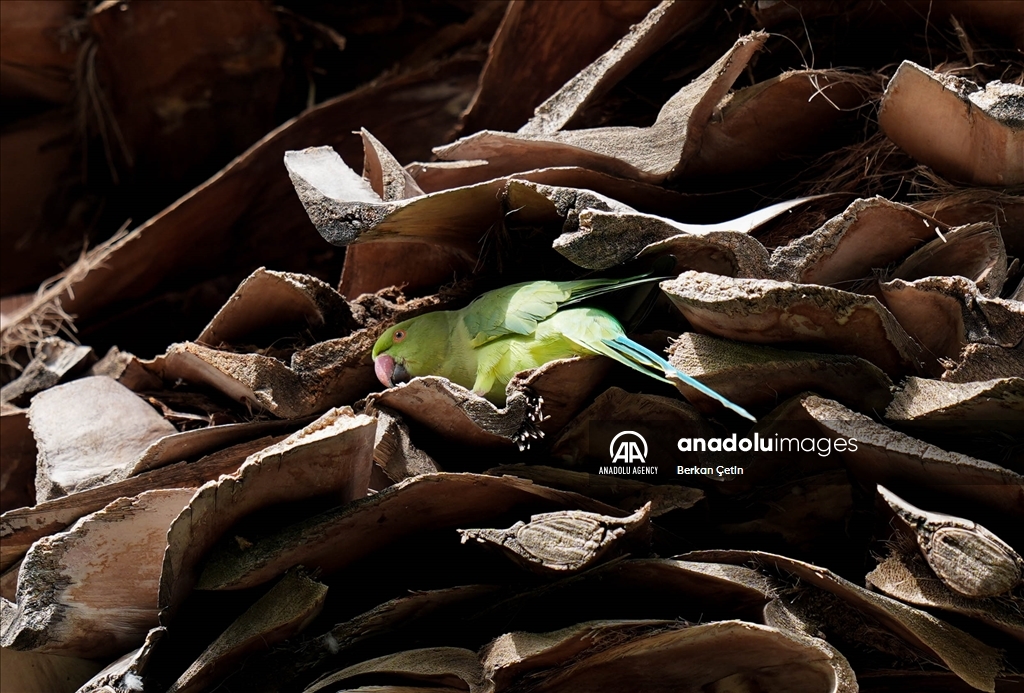
IZMIR, TURKIYE - OCTOBER 14: Green parrots use the hollows of palm trees in Izmir's Kulturpark as nesting sites in Izmir, Turkiye on October 14, 2024. These parrots, also known as "ring-necked parakeets" (Psittacula Krameri), are native to Africa and South Asia but have adapted to the climates of many countries, including Turkiye. Noted for their mimicry, long tail feathers, and red beak, they have increased their population and become a resident species in the area. ( Berkan Çetin - Anadolu Agency )
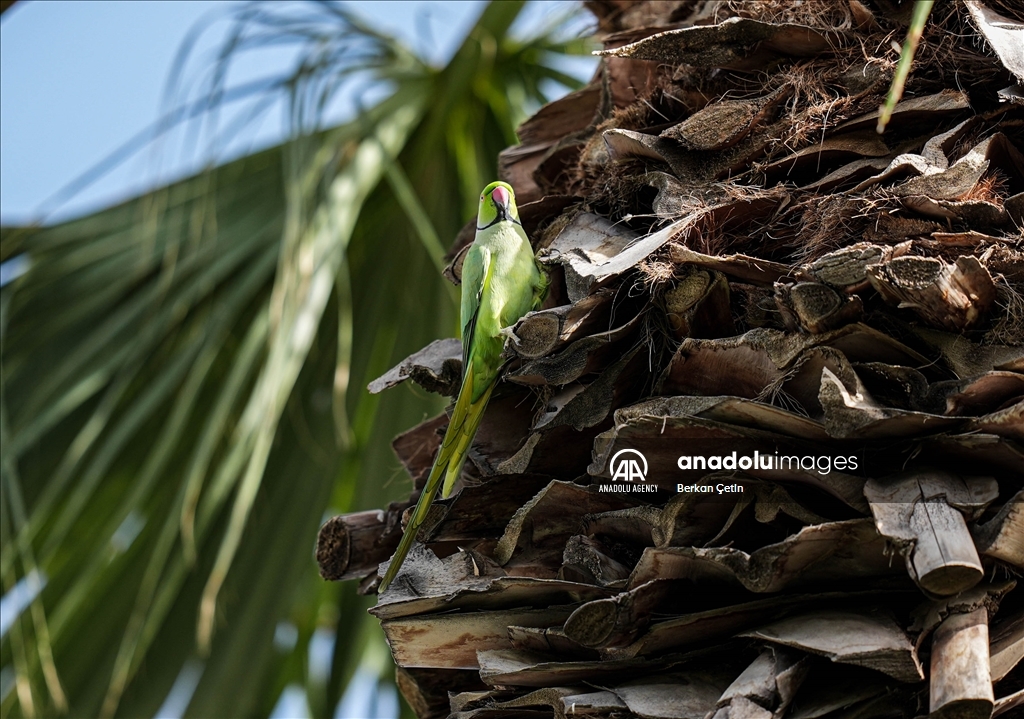
IZMIR, TURKIYE - OCTOBER 14: Green parrots use the hollows of palm trees in Izmir's Kulturpark as nesting sites in Izmir, Turkiye on October 14, 2024. These parrots, also known as "ring-necked parakeets" (Psittacula Krameri), are native to Africa and South Asia but have adapted to the climates of many countries, including Turkiye. Noted for their mimicry, long tail feathers, and red beak, they have increased their population and become a resident species in the area. ( Berkan Çetin - Anadolu Agency )
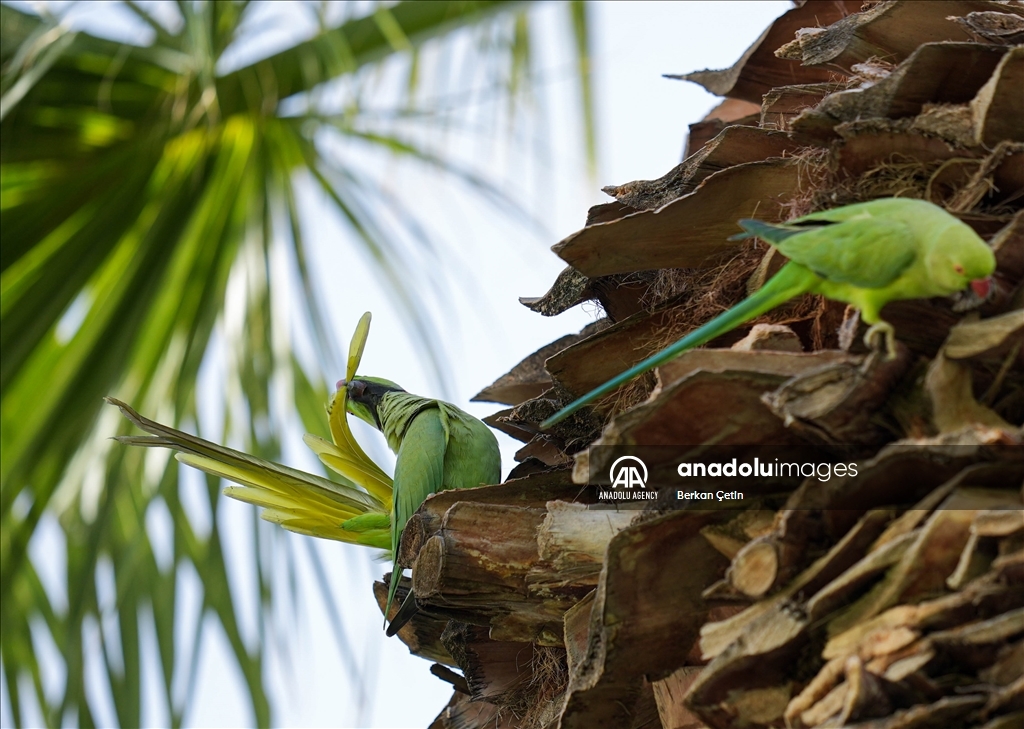
IZMIR, TURKIYE - OCTOBER 14: Green parrots use the hollows of palm trees in Izmir's Kulturpark as nesting sites in Izmir, Turkiye on October 14, 2024. These parrots, also known as "ring-necked parakeets" (Psittacula Krameri), are native to Africa and South Asia but have adapted to the climates of many countries, including Turkiye. Noted for their mimicry, long tail feathers, and red beak, they have increased their population and become a resident species in the area. ( Berkan Çetin - Anadolu Agency )

IZMIR, TURKIYE - OCTOBER 14: Green parrots use the hollows of palm trees in Izmir's Kulturpark as nesting sites in Izmir, Turkiye on October 14, 2024. These parrots, also known as "ring-necked parakeets" (Psittacula Krameri), are native to Africa and South Asia but have adapted to the climates of many countries, including Turkiye. Noted for their mimicry, long tail feathers, and red beak, they have increased their population and become a resident species in the area. ( Berkan Çetin - Anadolu Agency )
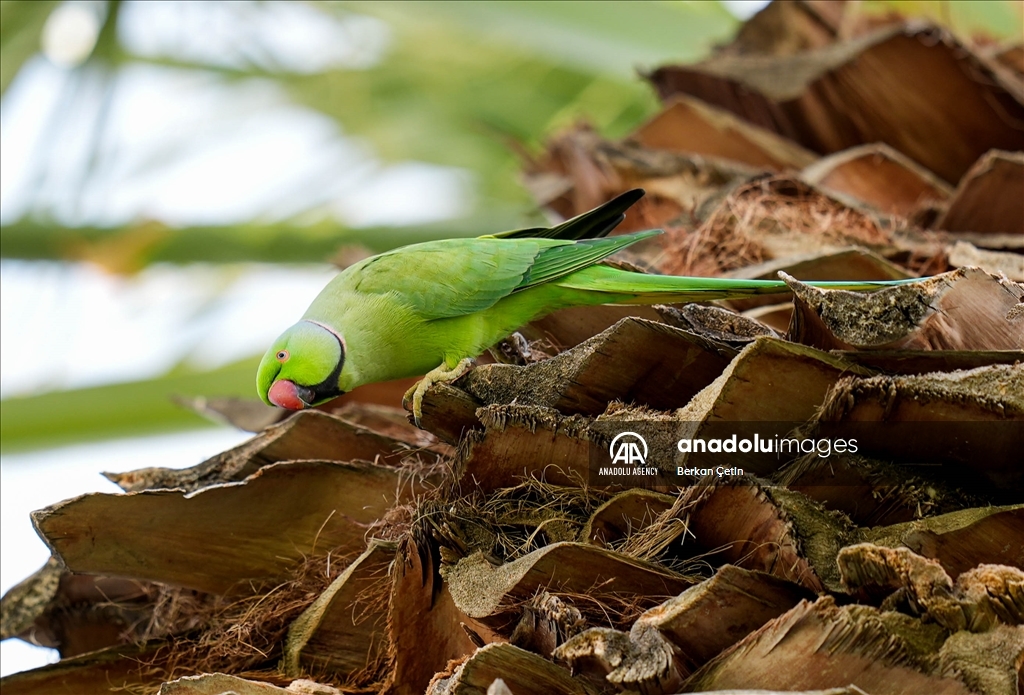
IZMIR, TURKIYE - OCTOBER 14: Green parrots use the hollows of palm trees in Izmir's Kulturpark as nesting sites in Izmir, Turkiye on October 14, 2024. These parrots, also known as "ring-necked parakeets" (Psittacula Krameri), are native to Africa and South Asia but have adapted to the climates of many countries, including Turkiye. Noted for their mimicry, long tail feathers, and red beak, they have increased their population and become a resident species in the area. ( Berkan Çetin - Anadolu Agency )
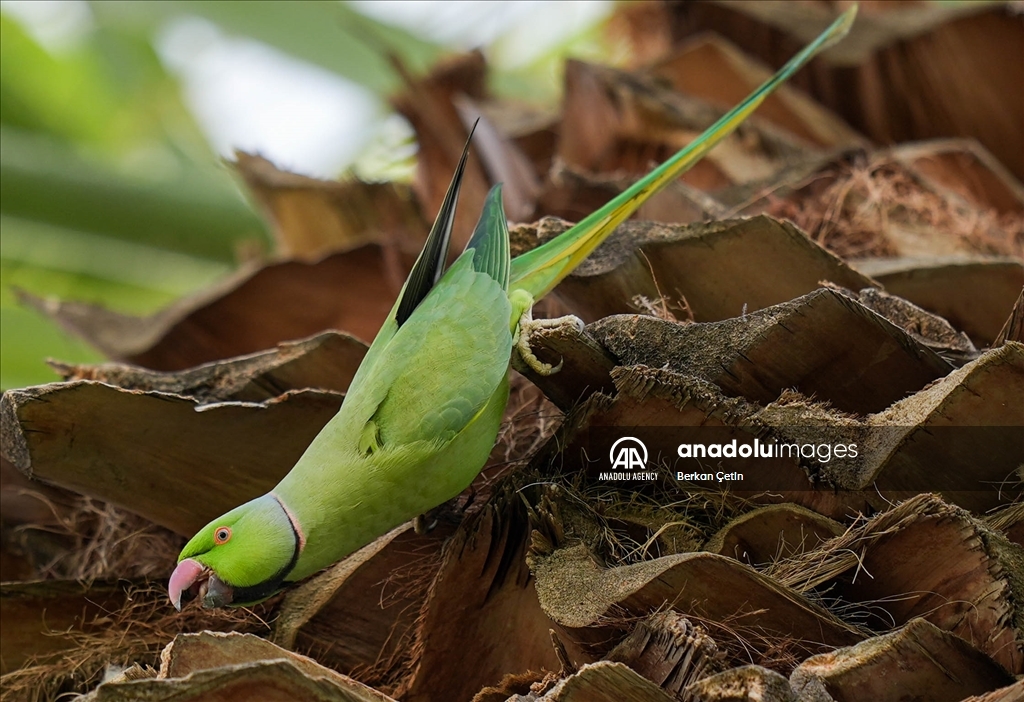
IZMIR, TURKIYE - OCTOBER 14: Green parrots use the hollows of palm trees in Izmir's Kulturpark as nesting sites in Izmir, Turkiye on October 14, 2024. These parrots, also known as "ring-necked parakeets" (Psittacula Krameri), are native to Africa and South Asia but have adapted to the climates of many countries, including Turkiye. Noted for their mimicry, long tail feathers, and red beak, they have increased their population and become a resident species in the area. ( Berkan Çetin - Anadolu Agency )
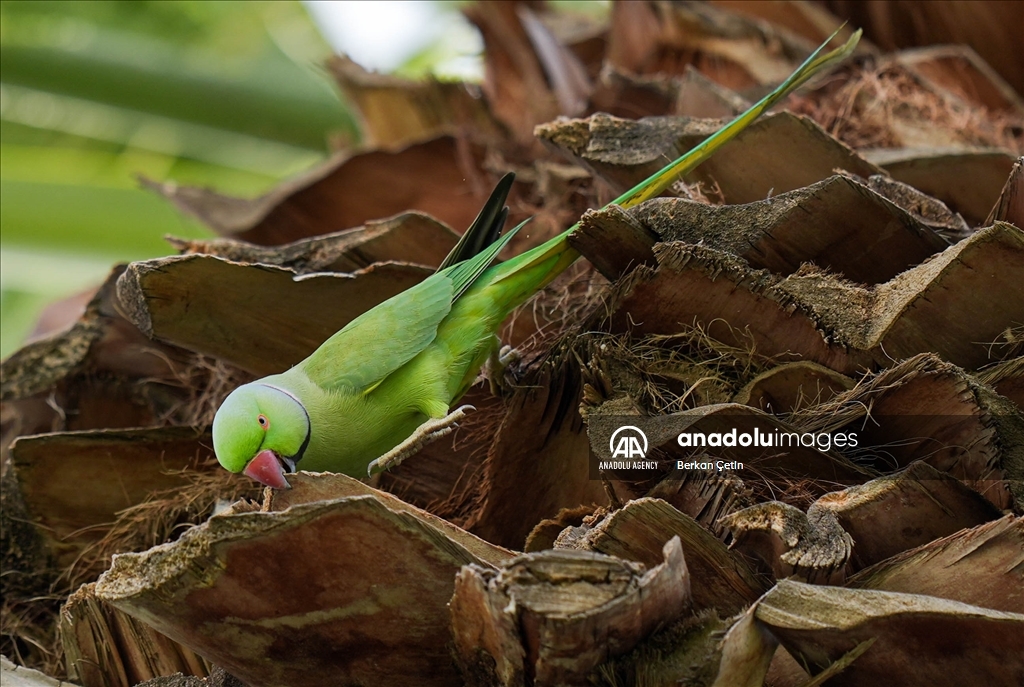
IZMIR, TURKIYE - OCTOBER 14: Green parrots use the hollows of palm trees in Izmir's Kulturpark as nesting sites in Izmir, Turkiye on October 14, 2024. These parrots, also known as "ring-necked parakeets" (Psittacula Krameri), are native to Africa and South Asia but have adapted to the climates of many countries, including Turkiye. Noted for their mimicry, long tail feathers, and red beak, they have increased their population and become a resident species in the area. ( Berkan Çetin - Anadolu Agency )
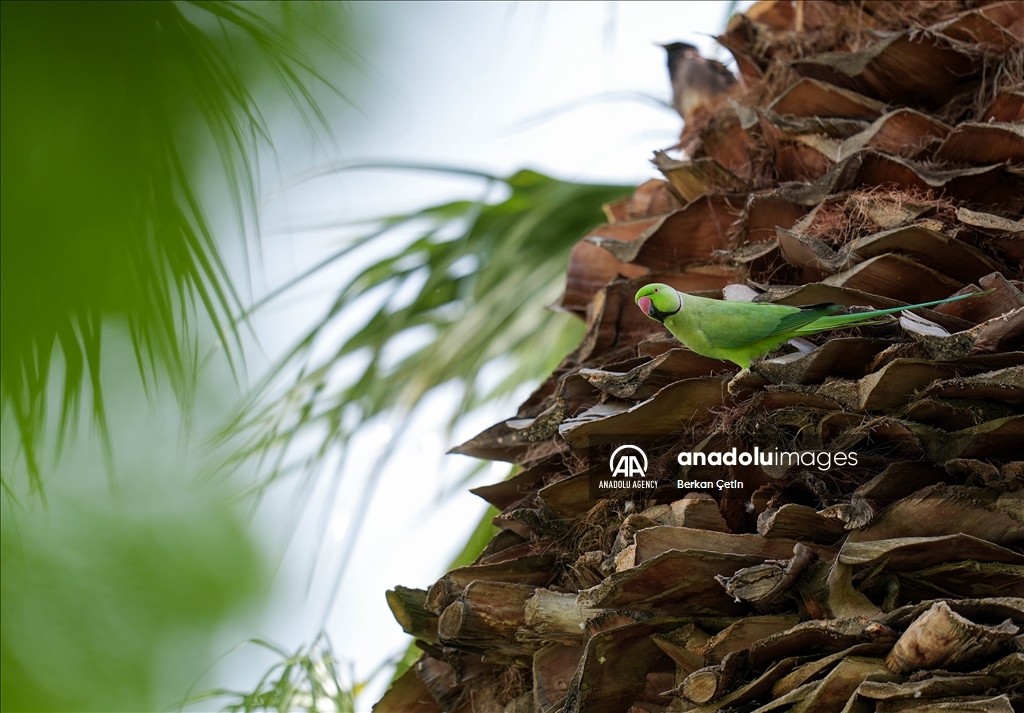
IZMIR, TURKIYE - OCTOBER 14: Green parrots use the hollows of palm trees in Izmir's Kulturpark as nesting sites in Izmir, Turkiye on October 14, 2024. These parrots, also known as "ring-necked parakeets" (Psittacula Krameri), are native to Africa and South Asia but have adapted to the climates of many countries, including Turkiye. Noted for their mimicry, long tail feathers, and red beak, they have increased their population and become a resident species in the area. ( Berkan Çetin - Anadolu Agency )
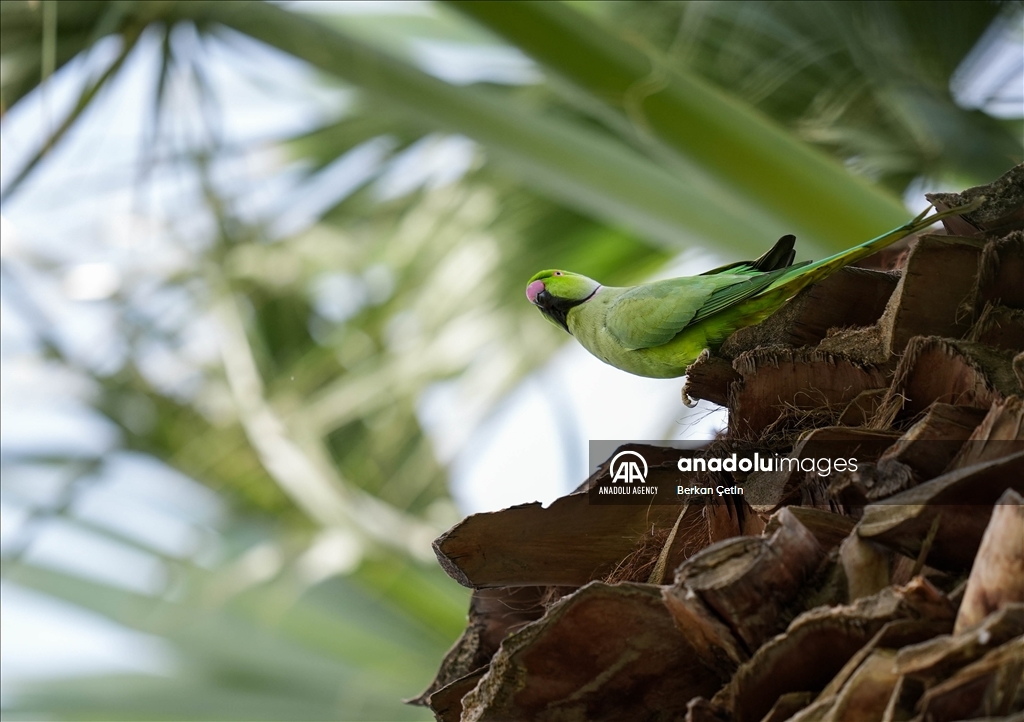
IZMIR, TURKIYE - OCTOBER 14: Green parrots use the hollows of palm trees in Izmir's Kulturpark as nesting sites in Izmir, Turkiye on October 14, 2024. These parrots, also known as "ring-necked parakeets" (Psittacula Krameri), are native to Africa and South Asia but have adapted to the climates of many countries, including Turkiye. Noted for their mimicry, long tail feathers, and red beak, they have increased their population and become a resident species in the area. ( Berkan Çetin - Anadolu Agency )
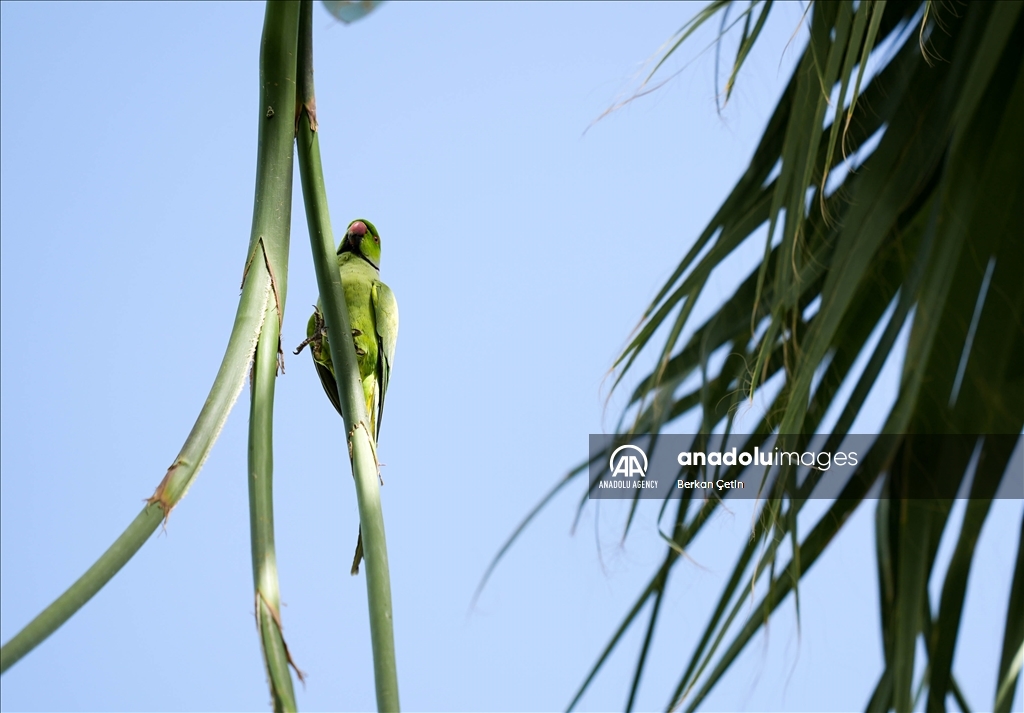
IZMIR, TURKIYE - OCTOBER 14: Green parrots use the hollows of palm trees in Izmir's Kulturpark as nesting sites in Izmir, Turkiye on October 14, 2024. These parrots, also known as "ring-necked parakeets" (Psittacula Krameri), are native to Africa and South Asia but have adapted to the climates of many countries, including Turkiye. Noted for their mimicry, long tail feathers, and red beak, they have increased their population and become a resident species in the area. ( Berkan Çetin - Anadolu Agency )
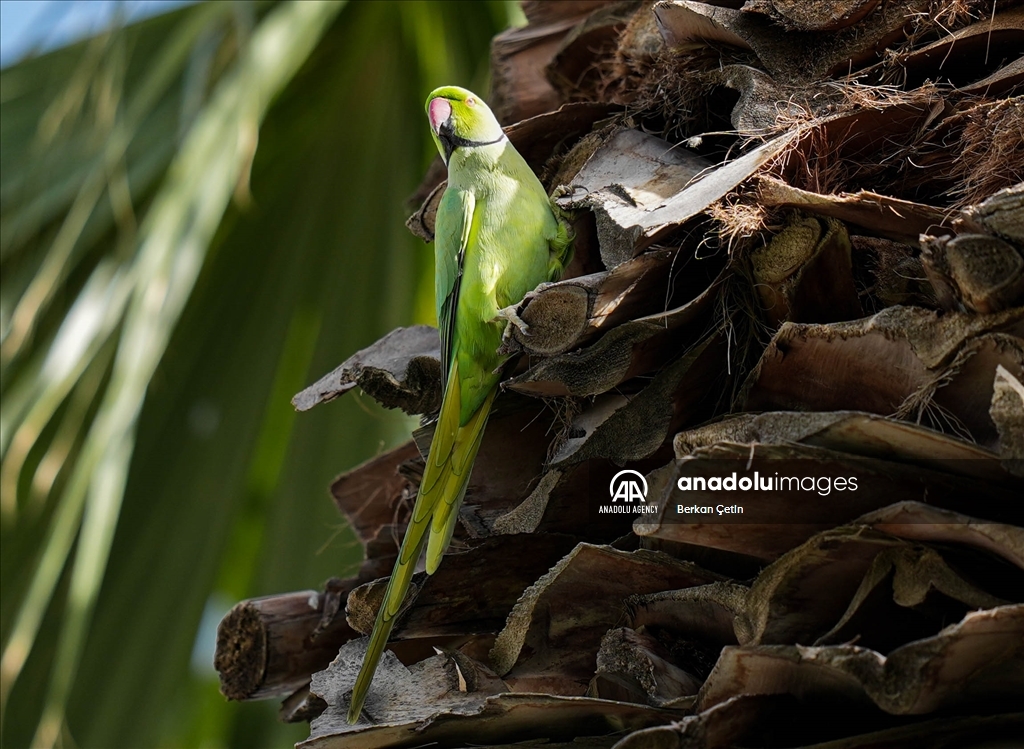
IZMIR, TURKIYE - OCTOBER 14: Green parrots use the hollows of palm trees in Izmir's Kulturpark as nesting sites in Izmir, Turkiye on October 14, 2024. These parrots, also known as "ring-necked parakeets" (Psittacula Krameri), are native to Africa and South Asia but have adapted to the climates of many countries, including Turkiye. Noted for their mimicry, long tail feathers, and red beak, they have increased their population and become a resident species in the area. ( Berkan Çetin - Anadolu Agency )
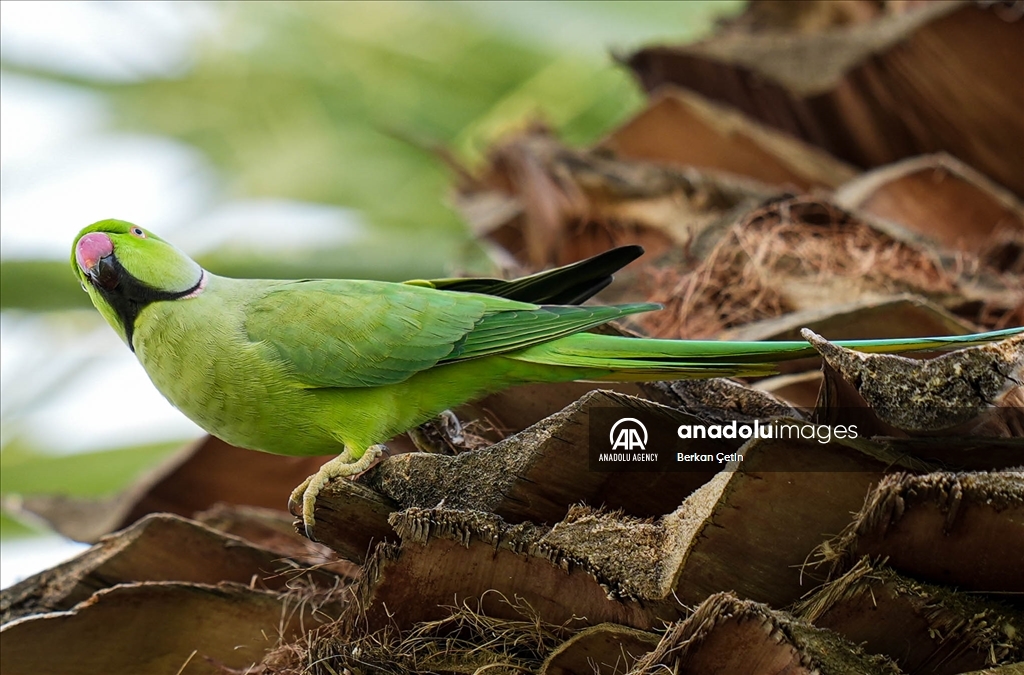
IZMIR, TURKIYE - OCTOBER 14: Green parrots use the hollows of palm trees in Izmir's Kulturpark as nesting sites in Izmir, Turkiye on October 14, 2024. These parrots, also known as "ring-necked parakeets" (Psittacula Krameri), are native to Africa and South Asia but have adapted to the climates of many countries, including Turkiye. Noted for their mimicry, long tail feathers, and red beak, they have increased their population and become a resident species in the area. ( Berkan Çetin - Anadolu Agency )

IZMIR, TURKIYE - OCTOBER 14: Green parrots use the hollows of palm trees in Izmir's Kulturpark as nesting sites in Izmir, Turkiye on October 14, 2024. These parrots, also known as "ring-necked parakeets" (Psittacula Krameri), are native to Africa and South Asia but have adapted to the climates of many countries, including Turkiye. Noted for their mimicry, long tail feathers, and red beak, they have increased their population and become a resident species in the area. ( Berkan Çetin - Anadolu Agency )
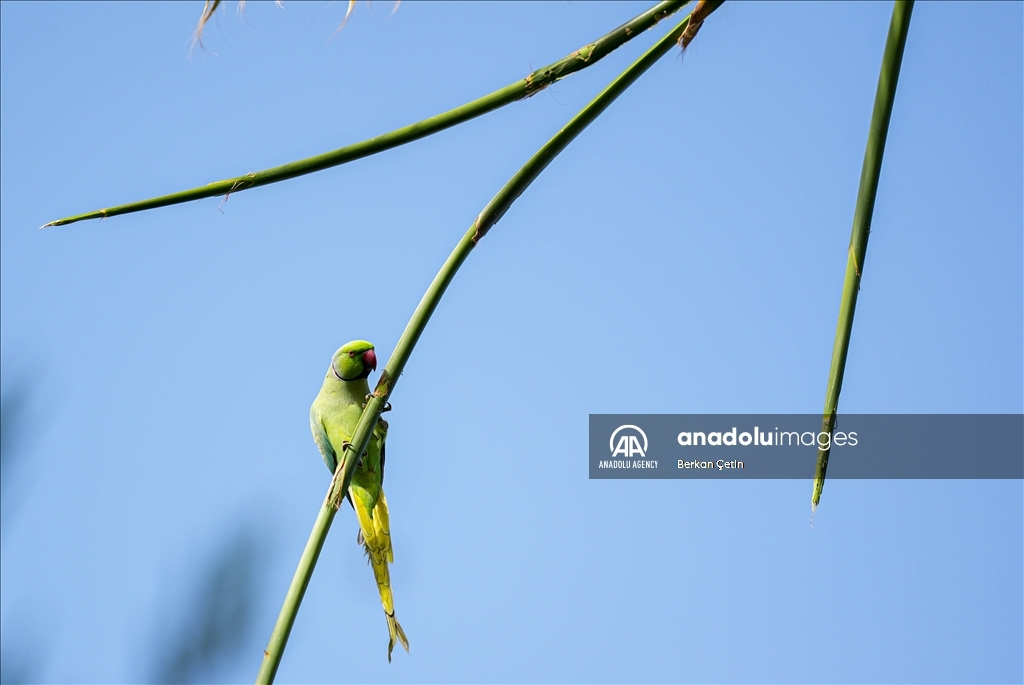
IZMIR, TURKIYE - OCTOBER 14: Green parrots use the hollows of palm trees in Izmir's Kulturpark as nesting sites in Izmir, Turkiye on October 14, 2024. These parrots, also known as "ring-necked parakeets" (Psittacula Krameri), are native to Africa and South Asia but have adapted to the climates of many countries, including Turkiye. Noted for their mimicry, long tail feathers, and red beak, they have increased their population and become a resident species in the area. ( Berkan Çetin - Anadolu Agency )
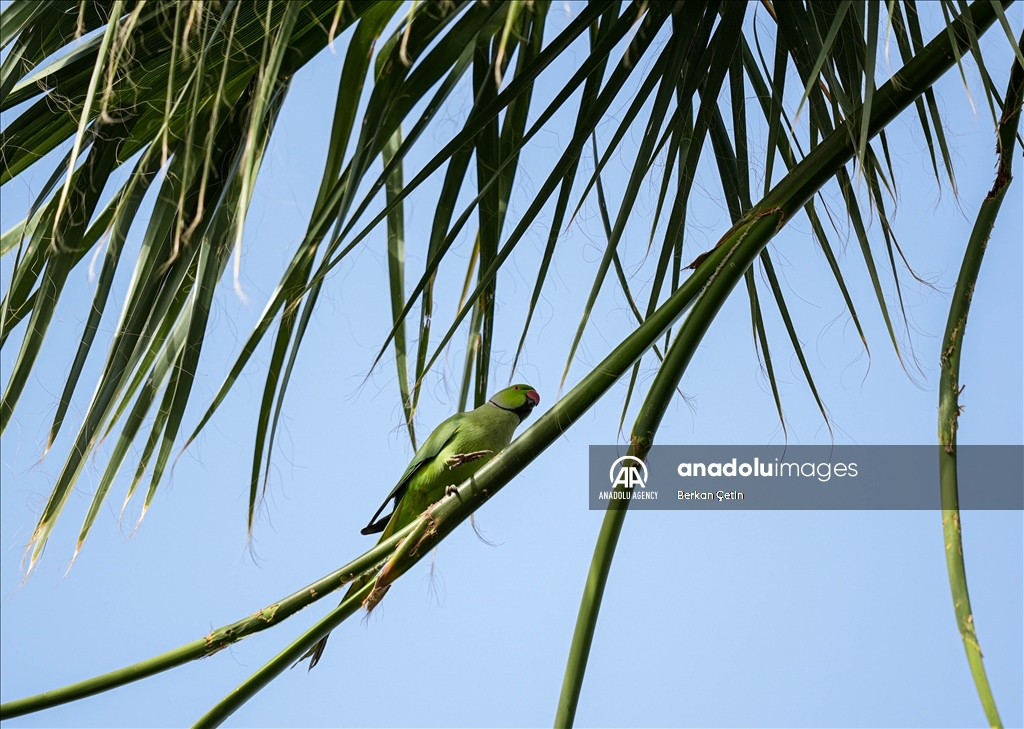
IZMIR, TURKIYE - OCTOBER 14: Green parrots use the hollows of palm trees in Izmir's Kulturpark as nesting sites in Izmir, Turkiye on October 14, 2024. These parrots, also known as "ring-necked parakeets" (Psittacula Krameri), are native to Africa and South Asia but have adapted to the climates of many countries, including Turkiye. Noted for their mimicry, long tail feathers, and red beak, they have increased their population and become a resident species in the area. ( Berkan Çetin - Anadolu Agency )


